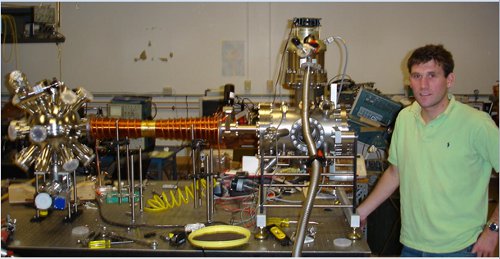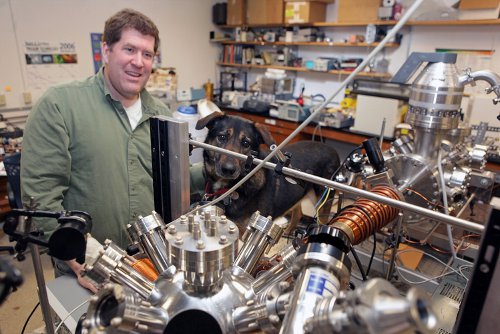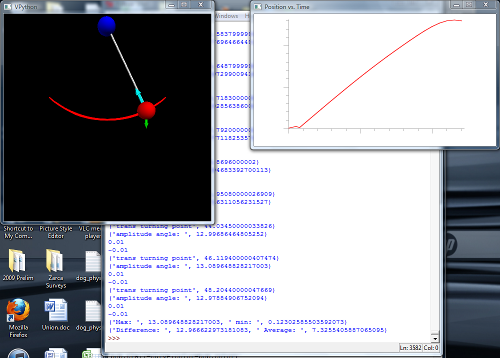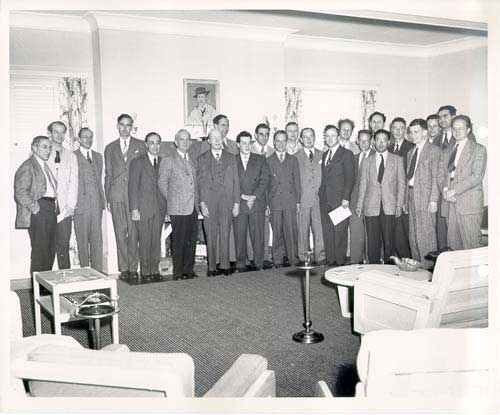`Once upon a time there were three little sisters,’ the Dormouse began in a great hurry; `and their names were Elsie, Lacie, and Tillie; and they lived at the bottom of a well–‘ `What did they live on?’ said Alice, who always took a great interest in questions of eating and drinking. `They lived on… Continue reading Tools of the Cold-Atom Trade: Optical Molasses
Month: July 2013
Balance, Productivity, and Temper
It’s been a few days since I did a work-life balance whine, but it’s not like I’m not thinking about it. The problem for the moment is the psychology of trying to be productive in limited time. Specifically, while I know intellectually that I need to be efficient in working, and make the most of… Continue reading Balance, Productivity, and Temper
Tools of the Cold-Atom Trade: Light Scattering Forces and Slow Atomic Beams
This series of posts is intended to explain the tools and tricks used to create and manipulate samples of ultra-cold atoms; thus, it’s appropriate to start with how we get those atoms in the first place. This will be a very quick background on the basic force used to make atoms cold, and then the… Continue reading Tools of the Cold-Atom Trade: Light Scattering Forces and Slow Atomic Beams
Tools of the Cold-Atom Trade: Introduction
I have a small collection of recent research papers that I’d like to write up open in various browser tabs and suchlike, but many of these would benefit from having some relatively clear and compact explanations of the underlying techniques. And while I can either dig up some old posts, or Google somebody else’s, it’s… Continue reading Tools of the Cold-Atom Trade: Introduction
Neil de Grasse Tyson Is John Harrison
Over at Galileo’s Pendulum, Matthew Francis expresses an opinion that’s sure to get him in trouble with the Inquisition and placed under house arrest: Carl Sagan’s Cosmos isn’t all that: However, even taking into account the differences in TV between 1980 and 2013, the show is very slow-paced at times. I’m not talking about the… Continue reading Neil de Grasse Tyson Is John Harrison
Gratuitous Cute Kid Pictures
A lot of heavy blogging this week, so here’s a cute kid picture (as the featured image; click through if you’re reading via RSS). This is SteelyKid and The Pip at play this morning, when they were back and forth across the yard a dozen times to pick up rocks from our gravel path and… Continue reading Gratuitous Cute Kid Pictures
Driving a Simulated Pendulum
Some time back, I spent a bunch of time writing a VPython program that simulated the motion of a pendulum, which turned out to do some strange things. In the comments to that, there were two things worth mentioning: first and foremost, Arnoques at #5 spotted a small error in the code that fixes the… Continue reading Driving a Simulated Pendulum
Reflecting, Totally; or Why the Pool Looks Shiny from Underwater
The other day, I made a suggestion to one of my research students of an experiment to try. When I checked back a day later, she told me it hadn’t worked, and I immediately realized that what I had told her to do was very stupid. As penance, then, I’ll explain the underlying physics, which… Continue reading Reflecting, Totally; or Why the Pool Looks Shiny from Underwater
Baseball and Gender Bias: “Number of Women in Physics Departments: A Simulation Analysis “
I’ve spent a bunch of time recently blogging about baseball statistics, which you might be inclined to write off as some quirk of a sports-obsessed scientist. I was very amused, therefore, to see Inside Higher Ed and ZapperZ writing about a new AIP report on women in physics (PDF) that uses essentially the same sort… Continue reading Baseball and Gender Bias: “Number of Women in Physics Departments: A Simulation Analysis “
Naming Names in QED
I’m doing edits on the QED chapter of the book-in-progress today, and I’m struck again by the apparent randomness of the way credit gets attached to things. QED is a rich source of examples of this, but two in particular stand out, one experimental and the other theoretical. On the experimental side, it’s interesting to… Continue reading Naming Names in QED








